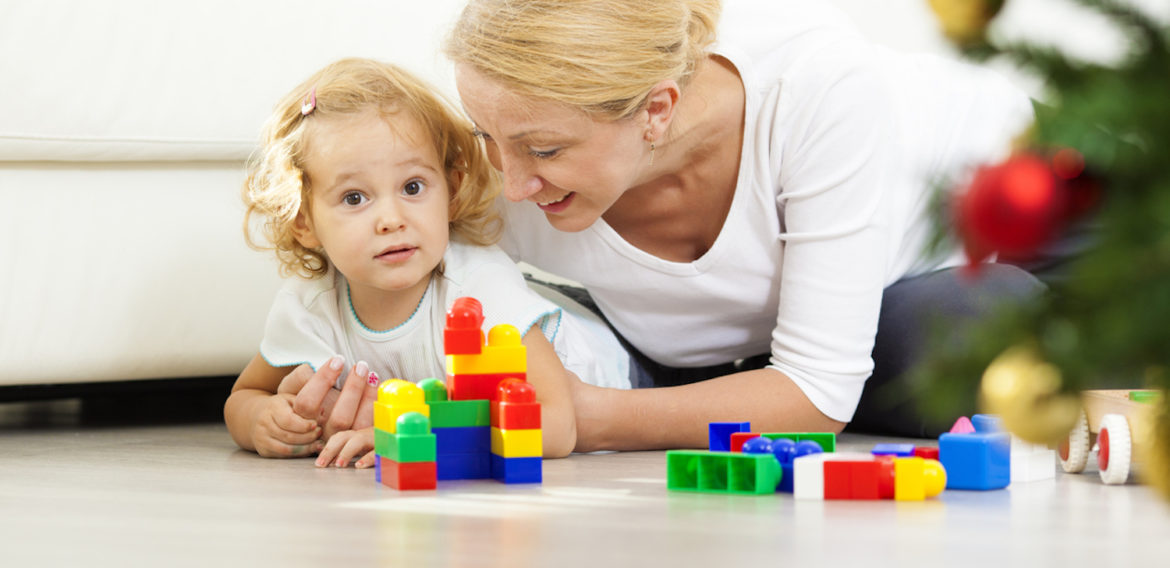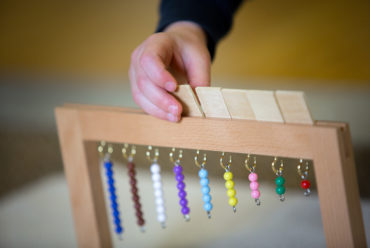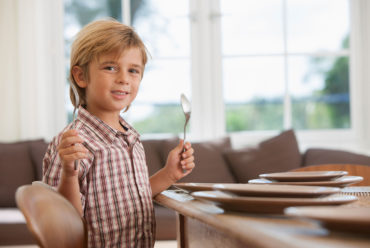How to Get Your Kids to Clean Up After Themselves
by Angela Chang
One of the perks to being a Montessori mom is that I’m not constantly cleaning up after my children. But this isn’t just a Montessori thing. All children go through a sensitive period for order from birth to age five. This means that they are naturally inclined to work towards and crave order in their lives — for routine, consistency, predictability.
This need peaks during the toddler years, which is why it is perfectly acceptable to expect your young toddlers to begin cleaning up after themselves. It’s not a chore to them, but it actually fulfills their craving for order by putting everything in its place and knowing where to expect to find it again.
When I was teaching in a toddler classroom, the very first thing I worked on at the beginning of each school year was getting my students to put their work back on the shelf when they were finished. It was exhausting and to outside observers it probably seemed like I was being way too strict, but after a couple of weeks, I didn’t have to remind anyone to clean up anymore. The children would choose a work, bring it to the table or a work rug, complete the work, put it back on the shelf, and choose another work. The work cycle flowed effortlessly. We didn’t lose vital pieces of works or trip over things left on the floor. The children knew what to expect and where they could find the activities they were most interested in. Why would I not carry that over to my home?
So how do you get your kids to clean up after themselves, even as toddlers?
- Make it the expectation. It’s just one of the family rules. If you get something out, you need to put it away before you get anything else out. Be consistent in enforcing this rule.
- Limit the number of pieces in each work. Do you really need 1,000 Lego pieces in the bin, or will 50 do? Too many is intimidating when it comes time to clean up, so you are more likely to run into resistance.
- Model it. If you want your child to follow the family rule of cleaning up after yourself, YOU need to follow the rule as well. Don’t throw things across the room into the right bin at the end of the day. Model the way you want your children to do it — carry things with two hands, walk slowly across the room, place items gently into bins and on shelves.
- Connect it to song. When you finish using a work, sing a consistent clean-up song (we like the old school one from Barney, but you can sing anything you want!). Songs make rules and expectations easier to remember, and you will find your child singing the clean-up song to herself after a few weeks without any prompting by you.
When can you start following these guidelines? FROM THE VERY BEGINNING. No, your four-month-old cannot realistically be expected to clean up after herself. But she can watch you clean up each activity before getting her another one. When your child is sitting on her own and starting to crawl, you can help her put pieces back into a bin before you take it back to the shelf. Once she is walking, you can encourage her to carry her work to a workspace and to carry it back to the shelf when she has finished. N just turned one, and I would say her clean-up rate is at about 50%. She still needs reminders. She still needs extensive modeling and help. But by the time she is 16 to 18 months, it will be a full expectation that she can do it all by herself, without constant reminders from me. A toddler at that age is fully capable of cleaning up after herself.
What do you do if your child refuses to clean up? What if it causes a meltdown?
- Count objects. If your child is resisting cleaning up, sit with her and start counting the pieces as you put them away. The repetition calms the child and makes it like a game. Usually by the time you get to four or five, the child wants to join in and starts putting the pieces in with you. Continue counting.
- Clean up objects by color/size/shape. “Hmm… let’s put all of the purple pieces away first!” Ask your child which shape she wants to pick up first. Ask if she can find all of the big pieces.
- Hand over hand. If you are still having a hard time getting your child to clean up her work, stop talking. Take her hand in yours, put it over a piece, pick it up, and guide her hand to the bin. Repeat. Do not talk. After a few repetitions, the child will usually want to continue by herself.
- Natural consequences. If your child is continuing to resist and nothing else is working, walk away. Tell your child that she may not choose another work until she cleans up the first work. Follow through with that statement. If she gets up and tries to get something else, guide her back to the first work and remind her of the expectation. If she needs more of a “why” answer, explain that if she leaves her work out somebody may step on it or you may lose some of the pieces. [I would not use this step until about 18 months].
Just keep in mind that in the beginning, it may not look exactly as you pictured. N just turned one, and this is what the shelf looks like when she cleans up by herself:
The works are crooked on the shelf, some of them are on top of each other — but she did it by herself.
Know that expecting your child to clean up after herself is not an unreasonably high expectation — it is perfectly in line with natural child development and actually works to fulfill her inner need for order and predictability. Your two-year-old absolutely can be expected to clean up her work EVERY TIME, no matter where she is.












No Comments